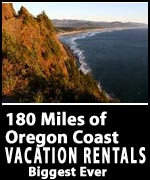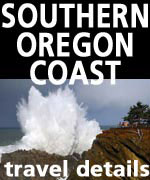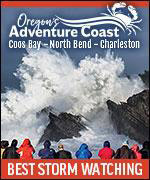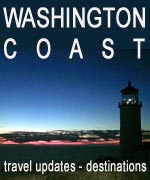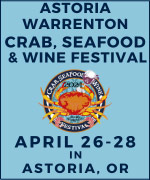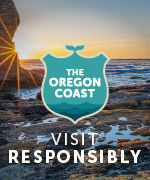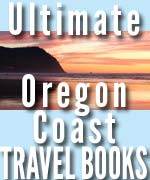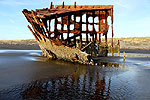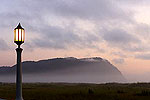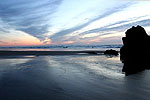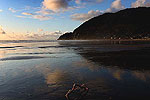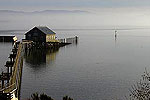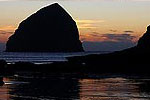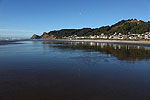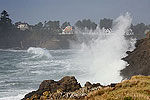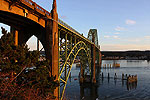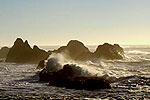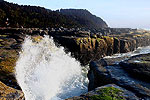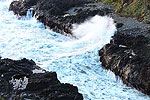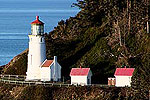Unique, Rare Oregon Coast Phenomena: When Headlands 'Wear a Hat' And Why
Published 10/06/20 at 6:54 PM PDT
By Oregon Coast Beach Connection staff
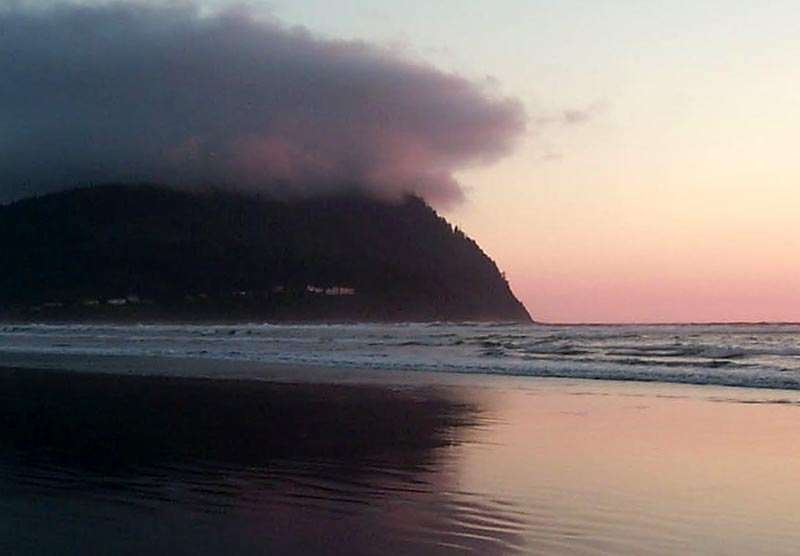
Includes exclusive listings; some specials in winter
In Cannon Beach:
Includes rentals not listed anywhere else
In Manzanita, Wheeler, Rockaway Beach:
Some specials for winter
In Pacific City, Oceanside:
Some specials for winter
In Lincoln City:
Some specials for winter
In Depoe Bay, Gleneden Beach:
Some specials for winter
In Newport:
Look for some specials
In Waldport
Some specials for winter
In Yachats, Florence
Some specials for winter
(Oregon Coast) – You’re on the beach, relaxing in the waves, and you look over at one of the headlands nearby, like Tillamook Head between Seaside and Cannon Beach, Depoe Bay’s Cape Foulweather or maybe Neahkahnie Mountain at Manzanita. You suddenly notice something odd: you’re seeing a single cloud or just a few clouds hovering above the headland but strangely nowhere else. (Above: a lone cloud formation hovering above Seaside's Tillamook Head - something slightly rare and unique).
It’s as if those headlands along the Oregon coast or even Washington coast appear to be generating their own little weather in a way – and it turns out that idea is not far off.
Some have nicknamed the phenomenon “wearing a hat.” Meteorologists usually call it cape clouds – if they call it anything at all. There’s technically no name for it.
Yet it’s very real, according to Tyler Kranz, a meteorologist with the National Weather Service (NWS) in Portland - and at the very least not super common.
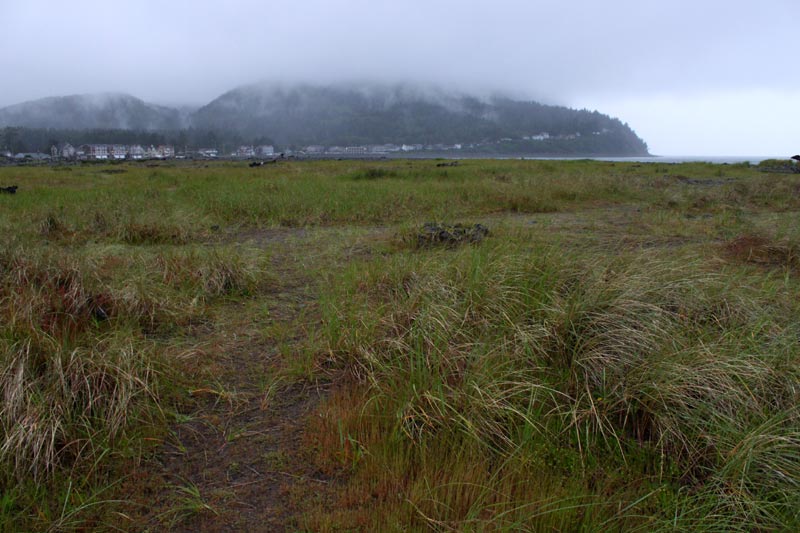
Above: this is not the same situation but more common. Here, Tillamook Head is simply high enough to pierce low stratus clouds
There are actually two scenarios you may be looking at, and it’s important to see the distinction. In one case, it’s common for clouds along the Oregon coast to get low enough that they bump into headlands. So yes, you’ll see scenes (like above) where a headland is not only wearing a hat, but maybe put on a blanket.
However, then there’s this lesser-seen situation.
“The less common scenario is where only the headland has clouds and the rest of the ocean is clear,” Kranz said. “It’s definitely a thing that happens, and there’s a meteorological reason for that.”
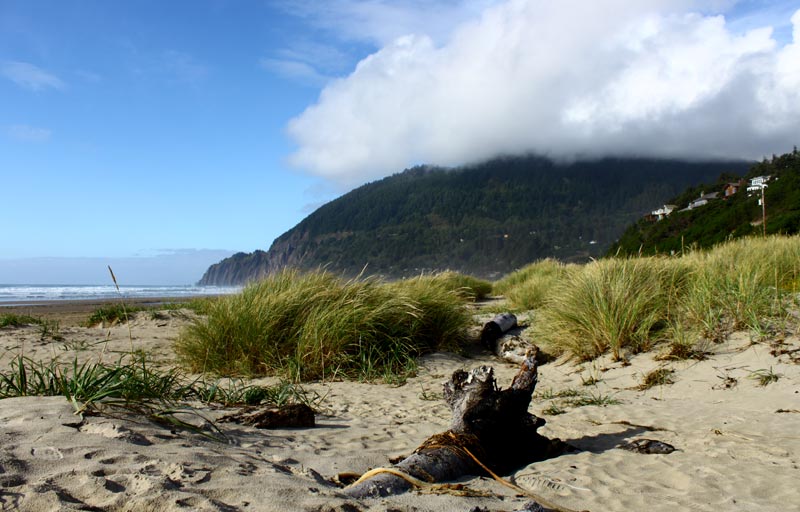
Manzanita's Neahkahnie Mountain wearing a hat
In a nutshell, several unique weather components have to coincide at the same moment. First, you have cool air zipping along the beach at a quick pace, and then suddenly it hits a headland. If humidity or dewpoint conditions are just right, the air will zoom up the headland, cool off even more and boom – become a cloud.
“Essentially you have cool, moist marine air flowing, a decent flow, and it’s flowing along the beach with no obstruction and all of a sudden it hits this higher terrain,” Kranz said. “So it has essentially two options. The air can go up and over the higher terrain; or if the atmosphere is too stable, the flow too weak or the terrain too high, it ends up going around then, rather than up and over.”
If the air flow zips up the slope, then it has a chance to become a cloud system all its own.
“So the scenario when you get the cape clouds – or ‘wearing a hat’ - would be when the air is making it up and over the higher terrain, being forced over and as it moves up it cools down a little bit all the way to saturation,” he said. “So essentially the temperature is cooling down to dewpoint temperature, which makes relative humidity 100 percent. In other words, you have a cloud.”
That is, in essence, what a cloud is: 100 percent relative humidity – or saturation or full dewpoint.
Kranz takes a while to ponder if there’s an actual meteorological term for all this action on a headland and says there isn’t.
“We call’em cape clouds but 'wearing a hat' sounds more exciting,” he said.
So what set of conditions have to be met to create this phenomena? It’s several things that have to be just right.
“You need air that’s already moist near the surface, so relative humidity already has to be pretty close to saturation but not enough to produce a cloud,” Kranz said. “So in those scenarios it wouldn’t take much cooling to get temps down to dewpoint and have your RH (relative humidity) to go up to 100 percent.”
Kranz said the winds have to be strong enough to force the air up and over the higher terrain – that’s the first ingredient. Then the air around the headland – or at least up top – has to be fairly close to saturation, but not quite there.
That way, the moist air zooming up the headland becomes even cooler and reaches 100 percent saturation, thus giving us that unique cloud formation over places like Neahkahnie or Tillamook Head.
Some of this depends on the size and shape of the headland. You won’t see it with Newport’s Yaquina Head because it’s not tall enough. Yachats’ Cape Perpetua is quite tall but doesn’t jut out far enough. Cape Foulweather is only 500 feet high and does not appear to have this happen much. Cape Blanco and Cape Sebastian on the southern coast have some reputation for this, while it definitely is more common for Cape Lookout near Oceanside to be seen smothered in a white blob. It’s a couple miles worth of a promontory.
Oregon Coast Hotels for this event - Where to eat - Map - Virtual Tour
Does it matter from which direction the air is flowing when it comes to “cape clouds?” There’s only a difference for the person viewing it, Kranz said, but not in the general geographical sense.
“This would effect which side would get more clouds,” he said. “So if there’s a moist southerly flow, your clouds start to form on the southern slopes of these peaks. Then on the northern side, you’d see clouds just being blown off to the north aloft, and quickly dissipating.”
In other words, whichever side of the peak the winds are blowing into will get more clouds.
If it’s coming from the south, it’s all vice versa: the southern side would see more puffy white stuff above the headlands. See Oregon Coast Weather - Washington Coast Weather
Cannon Beach Lodging
Nehalem Bay Lodgings
Manzanita Hotels, Lodging
Three Capes Lodging
Pacific City Hotels, Lodging
Lincoln City Lodging
Depoe Bay Lodging
Newport Lodging
Waldport Lodging
Yachats Lodging
Oregon Coast Vacation Rentals
Oregon Coast Lodging Specials
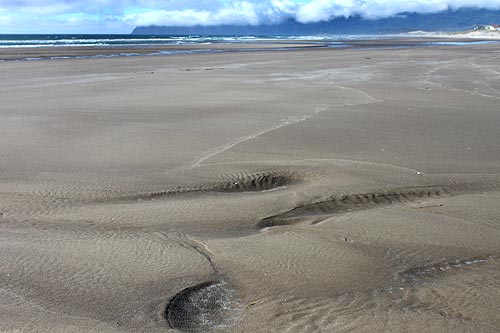
Cape Lookout "wearing a hat"
More About Oregon Coast hotels, lodging.....
More About Oregon Coast Restaurants, Dining.....
LATEST Related Oregon Coast Articles
Through 2 a.m. likely best, but some lights possible through dawn June 1 - 2. Space weather, astronomy
Rare Sperm Whale Stranding on N. Oregon Coast, Was Hit by Boat
Showing up near Gearhart, it will decompose naturally. Marine sciences
Coast Guard Barque 'America's Tall Ship' Coming to Portland Rose Fest, N. Ore...
Portland events: June 5 - 8; Astoria events June 13 - 15. Weather
Bright and Active Arietids Meteors May Hit Pre-Dawn Hours of Oregon, Washingt...
Look to east hour before sunrise and you may catch a show. Sciences, astronomy, weather
Why Now Could Be a Great Week for Spotting Killer Whales on Oregon Coast - Video
A good dozen documentations around Depoe Bay, Newport, Coos Bay, Bandon, Tillamook. Marine sciences
Summer Road Work, Traffic Issues Along Oregon Coast Include Astoria, Garibald...
Some daylight closures include bridges, OR 22, OR 18, OR 26, more. Travel tips. Seaside, Cannon Beach, Lincoln City. Travel tips
Pacific City Oregon Weather, 7-Day Forecasts, Live Conditions, Radar, Webcams...
Updated Constantly: Pacific City, Tierra Del Mar, Oregon Weather, Cams, Buoy Observations, Tides, Warnings - Alerts
Oregon Coast Has World's Oldest Harbor Seal, Celebrating 50 Years Soon
June 3 at Oregon Coast Aquarium in Newport. Newport events
Back to Oregon Coast
Contact Advertise on BeachConnection.net
All Content, unless otherwise attributed, copyright BeachConnection.net Unauthorized use or publication is not permitted








